Why double Mario forced Nintendo to change Super Mario 3D World
No tea tables were upended – as a Nintendo euphemism for radical changes towards the end of a game’s development goes – during the making of Super Mario 3D World. Since 2005’s Donkey Kong Jungle Beat, Nintendo EAD Tokyo has blossomed into one of the publisher’s finest assets, and it says much for the regard with which the group is held that Shigeru Miyamoto and fellow Nintendo veteran Takashi Tezuka felt comfortable taking a back seat, their responsibilities limited to “occasional spot checks”. The two designers of the original Super Mario Bros could rest easy: their most famous creation was in safe hands.
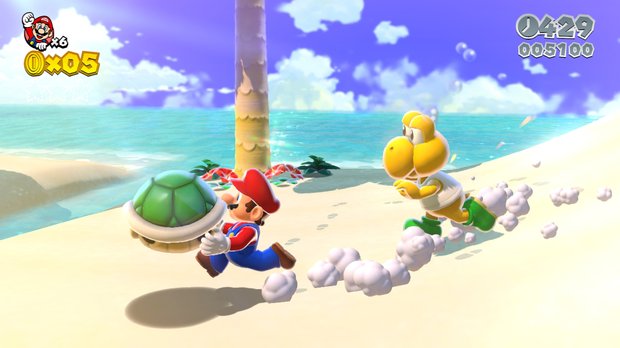
The mandate presented to Nintendo’s elite development team was clear. Its aim, according to Miyamoto, was “to make a 3D home console Super Mario game that people who like the New Super Mario games can also enjoy”. In other words, to forge a stronger link between Mario’s two-dimensional obstacle courses and his more expansive 3D adventures. And not only in design terms, you suspect, but also to bridge the sales gap between the two.
Plans were set in motion after Super Mario Galaxy 2 was completed. “We decided we should make an entirely new title, rather than another in the Galaxy series,” co-director Koichi Hayashida says. “Up until that point, we had only been working on games for the home console, so you might expect that we’d go on to develop a game for Wii U. In fact, we got really interested in creating a 3D Mario game that could be played with the 3D effect of 3DS. That’s why we chose to develop for the handheld system instead. Saying that, though, at that same point we also planned on making a version for Wii U. So, in that sense, you could say the game was in development for over three years.”
Hayashida admits that Nintendo may have had to reconsider its approach had Super Mario 3D Land been a failure. But the critical and commercial success of Mario’s 3DS debut encouraged the company to stay its course. With the help of Nintendo subsidiary 1-Up Studio (formerly known as Brownie Brown, which worked on the likes of Mother 3 and Heroes Of Mana), the largest development team in EAD Tokyo’s history began work on its Wii U spiritual sequel. And with the core concept established at a very early stage, there was plenty of time for experimentation.
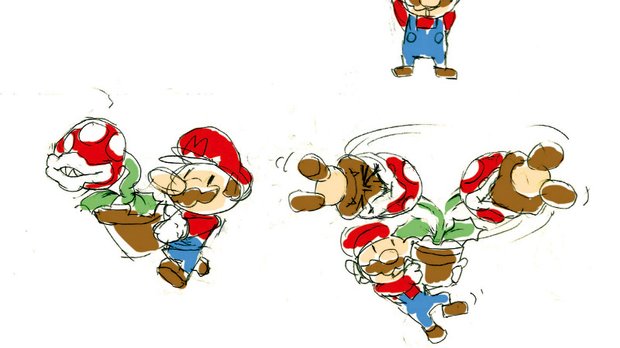
Indeed, the finished product bears the hallmarks of an eclectic approach to game design, one actively encouraged by the policies of co-director and team leader Kenta Motokura. Over 100 staff members were asked to come up with ideas, from throwaway gimmicks to entire level concepts, which were then displayed across dozens of Post-it notes stuck to the studio’s walls. So perhaps it’s little wonder 3D World sometimes feels generous to a fault, introducing ideas before throwing them away minutes later. “We discussed and discarded a huge number of ideas during development,” Motokura says. “Sometimes you just can’t tell if an idea is good or bad by looking at it on the drawing board; when this happens, we try it out in-game. If we don’t find the idea fun, it won’t make it into the final product. There was a lot of back and forth on the course designs due to this.”
That sense of restlessness is pronounced in 3D World with its myriad asides, which range from the rapid-fire thrill of the Mystery Houses to the puzzle-led Adventures Of Captain Toad levels, the latter having been particularly warmly received. “We thought they were a lot of fun, so we’re really glad everyone likes them too,” says Hayashida. “If enough fans express such enthusiasm, we’d consider doing something with this feature in future.” It’s tempting to suggest that the rise in popularity of the quick-fix gaming offered by smartphones may have been an inspiration, but it’s a comparison that Motokura is quick to dismiss. “They weren’t inspired by smartphone games. The idea was to design a game that would become even more fun as you play through it, and this influenced the pace of the game, effectively increasing the rhythm. We felt that a short challenge with quick results would be a good motivation for players to advance onto the next course.”
Producer Yoshiaki Koizumi chips in: “We do feel a need to keep delivering games that will surpass our audience’s expectations. As creators, we try to fill our games with as many unique elements as possible. Moving into the future, we want to continue to deliver even more surprises as fast as we can so that it never feels like there aren’t enough.”
Sign up to the GamesRadar+ Newsletter
Weekly digests, tales from the communities you love, and more
"We scrambled to readjust the game so that the double cherry feature would make it into the final product."
Despite having such a vast pool of ideas to draw from, one of 3D World’s very best notions came about by happy accident. The Double Cherry power-up was conceived when one of the level designers accidentally added an extra character model into one of the courses. “We ended up with a single player being able to control two versions of Mario at the same time!” Motokura recalls. “We all tried it and it was really amusing, so we scrambled to readjust the game so that this feature would make it into the final product. If the game had locked up with two identical characters on the level, I don’t think we would have the double Mario feature we have now!”
While the Double Cherry was a latecomer, the Super Bell that allows Mario and company to adopt feline form was introduced nearer the start of development, becoming the signature feature of a game overloaded with playful touches. As with many of the best Nintendo designs, it was simply the most elegant solution to an existing problem, or in this case two: the director’s desire to allow Mario to climb walls, and to provide a way to help novices clear high obstacles. “We wanted Mario to make use of not only the ground but other surfaces, which is what led us to this idea,” Motokura says. “At roughly the same time, we were looking at ideas for more exciting ways for players to run around the courses. One of the things we investigated was having characters scamper around on [all fours]. For both movement styles, the test characters were either a normal-looking Mario or a version with a slight difference in colour. In finally putting all this together into a new Mario ability, we felt that a cat ticked all the boxes… For the final design, we strove to make it as cat-like as possible, while keeping it clearly distinct from [3D Land’s] Tanooki Mario.”
Cat Mario also represented another answer to an ancient problem – that of combat within the context of a 3D platform game. Leaping onto enemies’ heads in two dimensions might not be a issue for most players, but that doesn’t hold true for 3D. It’s a balance that Nintendo has wrestled with for some time, as Hayashida explains: “[This] is why you had the punch in Super Mario 64 and the 360-degree spin attack in Super Mario Galaxy. Since Super Mario 3D Land, though, with the 3D effect, jumping on enemies has become a lot easier, but we still decided to add in the claw attack to give Cat Mario an advantage. Then, of course, there’s Rosalina, the unlockable character for this game, who can perform a spin attack without needing a transformation. I think, when playing as her, you’re really able to feel the difference in playstyles.”
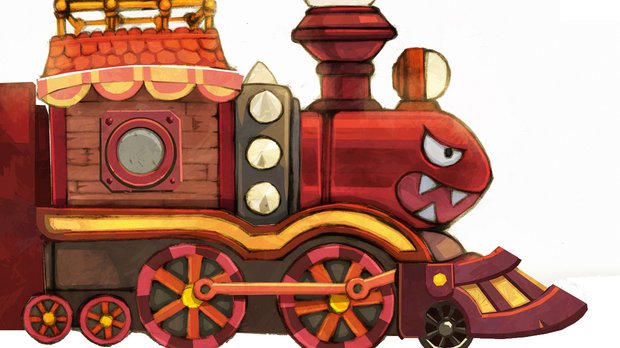
Yet if the five playable characters offer a range of abilities – Toad’s running speed makes him ideal for time attacks, while Peach’s floaty jump acts as a built-in difficulty modulator – the stages were seemingly designed with only one skillset in mind. “If a course is fun to play as Mario, then generally speaking it will also be fun to play using the other characters as well,” Hayashida says.
But the plumber handles differently from his other home console incarnations, the absence of a triple jump being a notable omission. Its exclusion stemmed from a desire to hark back to the simplicity of older Mario games. “Back when we were discussing the character abilities for Super Mario 3D Land,” Motokura says, “we thought about what was the simplest bit of fun that could be had using Mario’s regular abilities. We decided it was jumping across a series of platforms without falling – think back to the doughnut blocks and rotating platform courses in previous games. This decision helped us make comparatively intricate courses for Super Mario 3D Land and 3D World. In contrast, in a game like Super Mario 64, I think the fun needs to be on a slightly larger scale, hence why the triple jump worked so well there. It’s not that one ability is better than the other, it’s just that we use ones that best fit the design of the game.”
Losing 3DS’s stereoscopic effect and its aid to depth perception proved challenging, though, despite Hayashida’s admissions that it was also the root of the biggest hurdles during development of the 3DS title. “With Super Mario 3D Land, we developed the game with the premise of having the 3D effect, but we also had to make sure the game was still fun to play when this effect was turned off; that made things much more difficult. Through a lot of tweaking, I think we managed to make a game that’s also fun to play even without using the 3D feature. We took the lessons we learned here and used them in making Super Mario 3D World.”
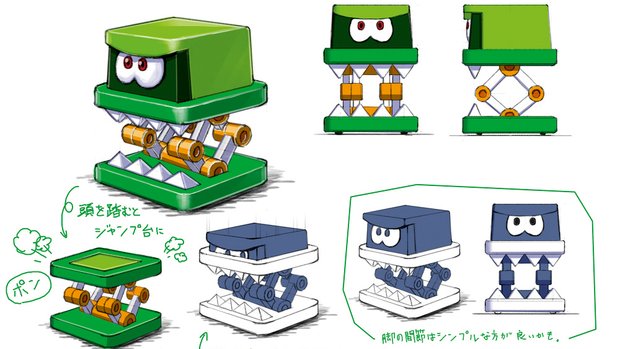
Further complicating matters, Nintendo’s team wanted to accommodate four players simultaneously for 3D World. “We had to make sure none of the players would feel left out, even if all four players are moving in different directions,” Hayashida says. “We combined multiple types of camera movements that would adjust to the layout or a given feature in the courses. It was a lot of work setting all this up!”
Miyamoto’s presence was felt at a macro level, but even so he directed the 3D Land and World team to tackle problems it might rather have skipped. “We used the Goal Pole in Super Mario 3D Land, but it was quite a challenge for us,” Hayashida says. “We tentatively asked Mr Miyamoto if we could change this, but he was pretty sure that the Goal Pole is a staple of Mario games. It’s definitely a clear marker, and is easily visible even from afar.”
Its blend of old and new earned Super Mario 3D World universal acclaim, even if it was criticised for being a poor showcase of its host console’s features. “We always try to keep our 3D Mario games both highly intuitive and readily accessible,” Motokura says. “We designed this game so that the players could really sink into it and clear all the courses without having to read lots of text or deal with difficult controls, whether playing by themselves or with others. However, if we were to make another game then we might need to make even more use of the GamePad.”
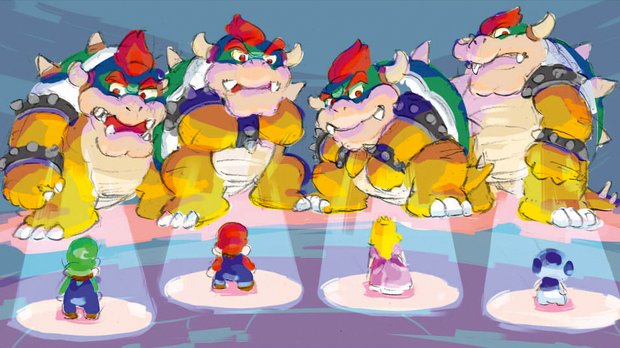
“For Super Mario 3D Land, we strove to integrate the best elements of 2D Mario games into a 3D Mario game,” Koizumi says. “In a sense, you can also say that we created Super Mario 3D World by rethinking traditional Mario game ideas. In addition to doing this, we went all out inserting elements [that allow] players to further enjoy the sprawling environments. There’s still a lot more room for discovery and invention, and we’ll continue to propose new and exciting game mechanics going into the future.”
Whether that will involve Toad, Luigi and company remains to be seen, but it may have to. After all, now we’ve had a home console 3D Mario with fourplayer co-op, it could be hard to justify a singleplayer-only outing. But will the team’s adventures continue on 3DS or Wii U? “That’s still a secret!” Koizumi laughs. “I can tell you, though, that we’ve already started approaching our next challenge.”
Read more from Edge here. Or take advantage of our subscription offers for print and digital editions.
Edge magazine was launched in 1993 with a mission to dig deep into the inner workings of the international videogame industry, quickly building a reputation for next-level analysis, features, interviews and reviews that holds fast nearly 30 years on.



